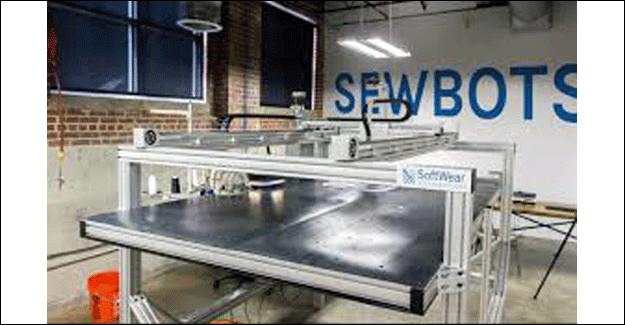
Robotics Is A Boon For Sewing Workforce: AE Sewing Machines
AE Sewing Machines’ marketing team in its recent blog post highlighted the logic behind encouraging the entry of robotics in the sewing profession, emphasizing that fears of human job loss were unfounded. Excerpts from the blog in a question answer format are reproduced below.
How sewing robots will change the industry for the better while not replacing humans?
The ‘fourth industrial revolution’ has affected almost every sector. Businesses across the world are looking for intelligent automation which will create greater efficiency and quality as well as vital savings on costs. The textile industry is one that prides itself on the skill and creativity of its workforce. However, robots will not replace humans in the industry. Instead, sewing robots work collaboratively with humans to bring benefits to the industry and the consumers.
The demand for intelligent automation and robotics in the industry continues to grow. It is predicted that over 1.3 million robots will enter factories across the globe in 2018. With increase in use of automation machinery and robotics, it is now essential that businesses implement automation in order to remain competitive.
Are robots a worry?
In the textile industry, sewing is a skill and an admired profession. Many people are concerned that introducing robotics into the textile industry will put skilled and talented workers out of jobs. Robots indeed could reduce the number of workers required for the mass production of textiles. However, freeing up time from generic processes will allow people to enhance their skills in other areas of the industry.
For example, sewing robotics will create managerial, administrative and supervisory roles within the industry. As well as this, skilled workers can focus on putting their talent to good use with high-end products, intricate work and quality detailing. Without the pressure of bulk production, manufacturers can spend more time ensuring quality.
In turn, the freedom provided by sewing robotics helps businesses to diversify and grow, all of which lead to a demand for jobs and talent, rather than redundancy.
Do sewing robotics work?
The textile industry is bombarded with the latest automation trends. However, not all of them have been successful. In the past, businesses who have tried to implement sewing automation and robotics have struggled. The problem came as experts attempted to create robots that emulated human processes. As sewing is incredibly intricate and complex, a robot could not simulate the same results.
One of the main problems with automation is automating the wrong processes. How a machine and human will handle a task is starkly different. Sewing automation, therefore, needs to focus on making robust methods designed for machines rather than trying to adopt a confusing process that is created for humans.
By thinking about the processes involved in the production, it enables businesses to think strategically and align both automation robotics and human processes in a way that will deliver success.
What are the benefits of sewing robotics?
Safety
In factories and workshops, safety for workers is paramount. In the textile industry, many tasks in the workstreams are hazardous. The hazardous conditions can put workers in danger in terms of accidents as well as long-term health implications. By automating the high-risk tasks through robotics, workers can supervise the process for efficiency and quality, rather than performing the task themselves.
With increased safety levels, you show a commitment to your workforce, and there is less chance of an incident which could hamper your bottom line and potentially close your business.
Waste reduction
Sewing robotics can also help to lessen the impact on the environment. Intelligent automation is not only accurate but efficient. There are fewer chances for error, more meticulous analysis and a high level of accuracy. This accuracy can ensure that the majority of raw material becomes a product. With less waste, you limit your impact on the environment and well as decreasing the costs and budget for the margin of error.
Return on investment (ROI)
Undoubtedly the money you can save through automation can be a significant boost to your business. By streamlining processes, speeding up production and attracting customers with your advanced production methods and speedy turnaround time, you start to realise a serious profit. You then have an adaptable team full of expertise and experience that can help you to grow your business and expand.
Robots can be a significantly substantial initial investment for many businesses. Some industries may look at the cost from the point of streamlining the workforce. However, to calculate ROI for your business, its best to look at the bigger picture; what value can you obtain when your workforce and automation equipment work together?
Sewbotics: The Next Generation
With automation being a crucial step in the future of the textile industry, Sewbotics is designed to support the UK textiles industry with innovative automation techniques, robots and machinery. We believe the success of the UK textile industry will come from a collaboration between machinery and highly-skilled technicians in the workplace.
From garment production to automotive upholstery, Sewbotics will provide the expertise and robotics that you need to allow your business to flourish and remain competitive in an increasingly automated future.
Textile Excellence
If you wish to Subscribe to Textile Excellence Print Edition, kindly fill in the below form and we shall get back to you with details.








